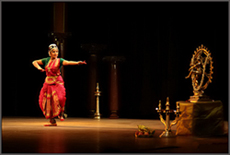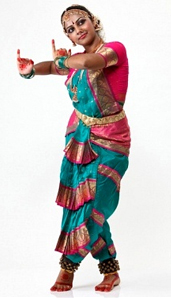Search
Bharata Natyam - Summary
Course Structure
Arangetrams and Certified Courses
Arangetrams is the guru's endorsement of the student's reaching a relative mastery level, although the complexity of the items performed in the Arangetrams margam depends on the student's age. The choice of the arantegram items demonstrates the guru's ability to bring out the student's best aptitudes. Preparation for an arangetram usually takes over 5 years, although in some cases it can take less time. The guru has to dedicate considerable time for the one-to-one classes, give special training sessions for the student and conduct several rehearsals with a live orchestra. The arangetram costs vary depending on the student's preferences and his financial resources. Certificate course (non-graded) This is a foundation course and covers all the essentials, both theory and practice. The standard course consists of 2 modules (Level 1 and Level 2) and lasts for 2 years. Level 1 includes the basics:
Jatiswaram, Kouthuvam, Sabdam, Padam, Ashtapadi After each year the student receives a Certificate of Attendance. |







 Bharatanatyam is the most popular of Indian dances and belongs to the South Indian state of Tamilnadu. Its antiquity is well established. In the past it was practised ad performed in the temples by a class of dancers known as the devadasis. It was a part of the religious rituals and has a long and hoary past. The kings and the princely courts patronised the temples, as well as the various traditions sustaining the dance form.
Bharatanatyam is the most popular of Indian dances and belongs to the South Indian state of Tamilnadu. Its antiquity is well established. In the past it was practised ad performed in the temples by a class of dancers known as the devadasis. It was a part of the religious rituals and has a long and hoary past. The kings and the princely courts patronised the temples, as well as the various traditions sustaining the dance form.